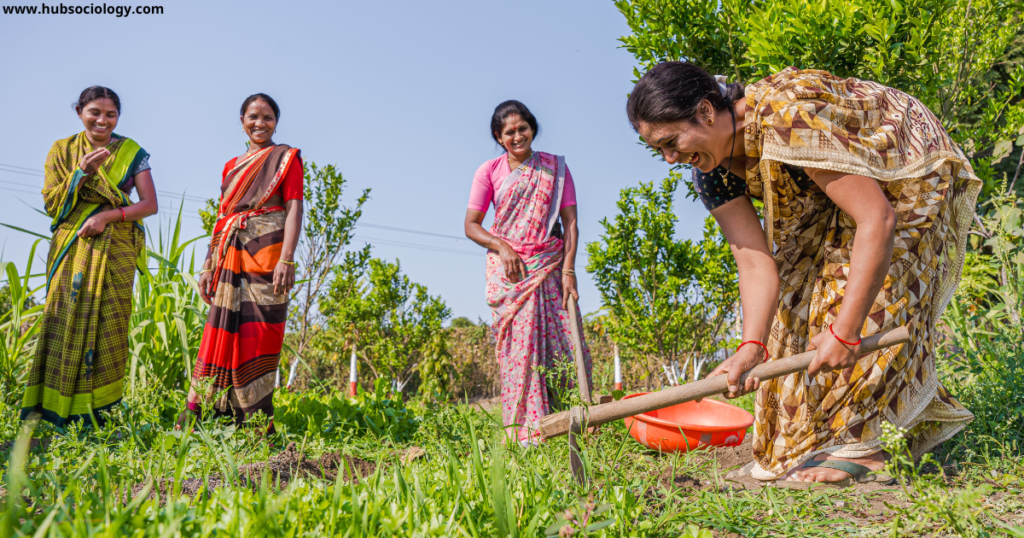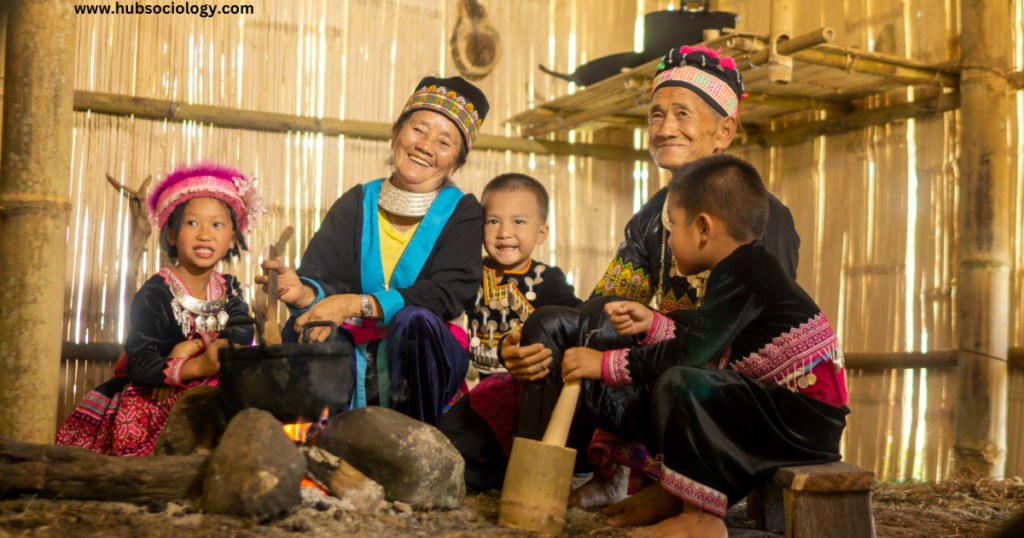Introduction
Leela Dube (1923-2012) was a prominent Indian sociologist and feminist scholar whose work critically examined the intersections of gender, kinship, and patriarchy in South Asia. Her research focused on understanding how patriarchal structures persist and transform within the household, community, and state, particularly in the context of modernization. One of her significant contributions is the analysis of how patriarchy operates at multiple levels—family, community, and state—and how these structures interact in modernizing Asian societies.
This article explores Dube’s conceptualization of patriarchy in modernizing Asia, emphasizing its structural dimensions and the ways in which gender relations are shaped by economic, political, and cultural forces. It discusses her arguments on the persistence of patriarchal norms despite modernization, the role of the state in reinforcing gender hierarchies, and the implications for feminist movements in Asia.

Understanding Patriarchy in Leela Dube’s Work
Dube’s approach to patriarchy is rooted in structural-functionalism but incorporates feminist critiques. She argues that patriarchy is not a monolithic system but a complex, multi-layered structure that operates differently across social institutions. Her work highlights how:
- Patriarchy in the Household: The family is the primary site where patriarchal norms are reproduced. Dube examines how kinship systems, inheritance laws, and marriage practices reinforce male dominance. In South Asia, practices such as patrilineality, dowry, and son preference sustain women’s subordination.
- Patriarchy in the Community: Beyond the household, caste, religion, and local customs shape gender roles. Dube emphasizes how community norms regulate women’s mobility, labor, and sexuality. For instance, in rural India, women’s participation in agricultural labor is often undervalued, and their access to communal resources is restricted.
- Patriarchy and the State: The state plays a crucial role in either challenging or reinforcing patriarchal structures. Dube critiques how postcolonial states in Asia have often adopted modernization policies that marginalize women. For example, land reforms often exclude women from property ownership, and labor laws fail to protect informal women workers.
Modernization and the Persistence of Patriarchy
A key theme in Dube’s work is the paradox of modernization in Asia—while economic development and urbanization bring changes in women’s education and employment, patriarchal structures adapt rather than disappear. She identifies several mechanisms through which patriarchy persists despite modernization:
- Selective Modernization: Modernizing states often promote women’s education and workforce participation but within patriarchal frameworks. For example, women are encouraged to work in “feminized” sectors like teaching or nursing, which reinforce traditional gender roles.
- Legal Reforms and Gaps: While laws promoting gender equality exist (e.g., inheritance rights, anti-dowry laws), their implementation is weak. Customary practices often override legal provisions, particularly in rural areas.
- Cultural Continuities: Modernization does not necessarily dismantle cultural norms that uphold male authority. Dube notes that even educated, urban women face pressures to conform to traditional roles as wives and mothers.
The Role of the State in Reinforcing Patriarchy
Dube critically examines how the state, despite its claims of promoting gender equality, often perpetuates patriarchal ideologies. She highlights:
- Development Policies: State-led development programs often assume male-headed households, marginalizing women’s economic contributions. For example, agricultural subsidies are typically directed to male farmers, ignoring women’s labor in farming.
- Family Laws: Personal laws in many Asian countries (e.g., Hindu, Muslim, and Christian family laws in India) are deeply gendered, regulating marriage, divorce, and inheritance in ways that disadvantage women.
- Political Representation: Despite quotas for women in local governance (e.g., Panchayati Raj in India), women often remain token figures, with real power resting with male family members.

Feminist Resistance and Alternative Visions
Dube’s work does not merely critique patriarchy but also explores spaces of resistance. She acknowledges the role of feminist movements in challenging oppressive structures but notes their limitations in reaching marginalized women. She advocates for:
- Grassroots Mobilization: Women’s collectives, self-help groups, and NGOs play a crucial role in empowering women at the local level.
- Legal and Policy Reforms: Strengthening gender-just laws and ensuring their enforcement is essential.
- Reimagining Kinship and Family: Dube calls for alternative family structures that challenge patrilineal norms, such as recognizing women’s rights in natal families and promoting joint ownership of property.
Conclusion
Leela Dube’s analysis of patriarchy in modernizing Asia remains profoundly relevant. Her work demonstrates that modernization does not automatically lead to gender equality; instead, patriarchal structures adapt to new economic and political conditions. By examining the interplay between household, community, and state, Dube provides a framework for understanding how gender hierarchies are sustained and how they can be challenged.
For feminist sociology, her contributions underscore the need for intersectional approaches that consider caste, class, and religion alongside gender. As Asia continues to modernize, Dube’s insights remind us that legal and economic changes must be accompanied by cultural and social transformations to dismantle patriarchy effectively.

Topic Related Questions
5-Mark Questions (Short Answer)
- Define patriarchy as conceptualized by Leela Dube.
- How does the household function as a site of patriarchy in South Asia?
- What is the role of kinship in reinforcing patriarchal norms, according to Leela Dube?
- How does modernization affect gender roles in Asia, according to Dube?
- Name two ways in which the state reinforces patriarchal structures in modernizing Asia.
10-Mark Questions (Brief Essay/Detailed Answer)
- Discuss Leela Dube’s analysis of the relationship between patriarchy and the household in modernizing Asia.
- Explain how community norms and caste systems contribute to the persistence of patriarchy in South Asia.
- Critically examine the role of the state in either challenging or reinforcing patriarchy, with reference to Dube’s work.
- How does selective modernization sustain patriarchal structures despite economic development?
- Analyze the contradictions between legal reforms and customary practices in maintaining gender inequality, as discussed by Leela Dube.
15-Mark Questions (Long Essay/Critical Analysis)
- “Modernization in Asia has not dismantled patriarchy but reconfigured it.” Critically evaluate this statement in light of Leela Dube’s arguments.
- Discuss Leela Dube’s contributions to feminist sociology with reference to her analysis of patriarchy in state, community, and household structures.
- Examine how economic development policies in postcolonial Asia have marginalized women, drawing on Dube’s critiques.
- “Patriarchy is not monolithic but operates at multiple levels—family, community, and state.” Elaborate on this statement using Leela Dube’s framework.
- How do feminist movements in Asia challenge patriarchal structures, and what limitations do they face, according to Leela Dube?

1 thought on “Leela Dube: Structure of Patriarchy, State, Community, and Household in Modernizing Asia”